When the Satpura Natural Park opens for the tourist season, the MP tourism and Forest Department conduct guided Jeep, Elephant and Walking Safaris inside the core area of the forest. Nearly 1440 sq KM of dense forest and abundant wildlife provide great opportunity to discover wildlife in its natural habitat.
The saaz and teak forest is home to a number of illustrious members from the animal kingdom, like spotted deer, sambhar, black buck, four horned antelopes, porcupines, wild boar, many species of primates, sloth bear, leopard, and – if you get lucky – the mighty tigers. There are around 40 tigers in the park, but it needs a certain amount of luck on your part to manage to see them.
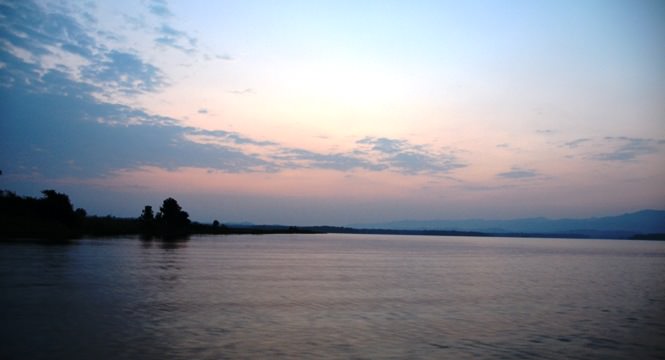
River crossing at dawn
Our safari was to start very early in the morning, we got the wakeup call by 4:45 AM and were sitting in the vehicle by 5:15 AM. Before the dawn broke, we were already crossing the river in our boat, in a cold misty morning which made everything look so beautiful.
During the winters, morning safaris are the best for many reasons. After a cold night, the animals come out in the sun to warm up and can be seen easily, so are the birds basking on the treetops. As the dew is still there, tigers do not like walking in the grass and prefer to trudge on the road instead, and there is a greater chance to catch a glimpse of them.
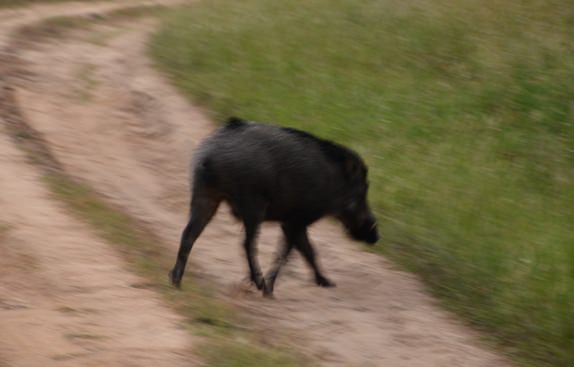
This wild boar crossed the road in front of us just as we started. Unfortunately the camera was set in the wrong mode and that blurred the photograph 🙁
Once we got down on the other side, at the forest lodge in the Core, there was a Jeep waiting for us with a driver, a guide and a trainee guide, who although knew a little more than us, had a lot more to learn. There are 3 safari routes available for the trek – the Lagda track, a shorter track and the Churna track (which is the longest and a full day event). We had chosen the Lagda track based on the recommendation of the guide as Churna track was not open yet. So without wasting any time, we hopped on the vehicle and started on yet another little adventure.
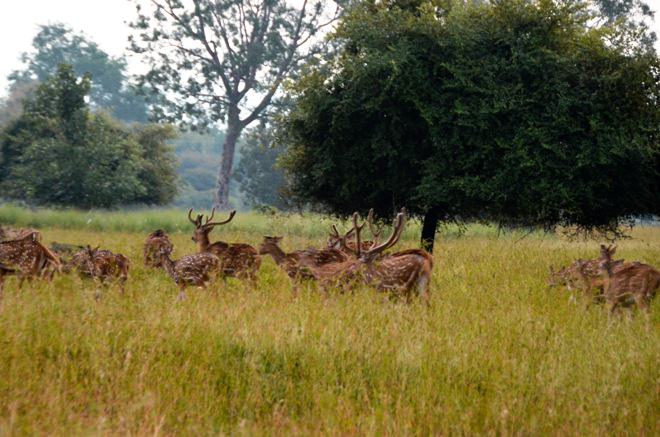
An assorted bunch of deer and sambhar at a distance just as we started
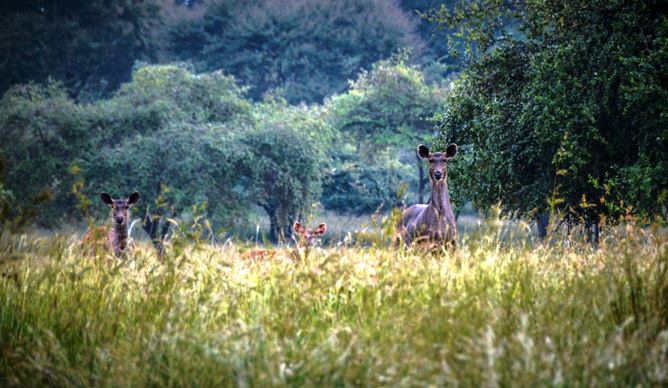
Pretty curious, are they not?
The safari started on a promising note – within the first 50 meters, we saw a wild boar proceeding with his daily morning bath in a scenic pond with water lilies and red lotus. Wild boars are very particular about hygiene and take a bath every day, unlike me. A little further on the road, we were greeted by a herd of Spotted deer and Sāmbhar who seemed to look at us curiously wondering why were we up so early today. Another 100 meters and another wild boar crossed the road just in front of us, without even bothering to look at us, and we were like – today we are going to see a tiger! Thoroughly spirited and full of hope, we marched on ..
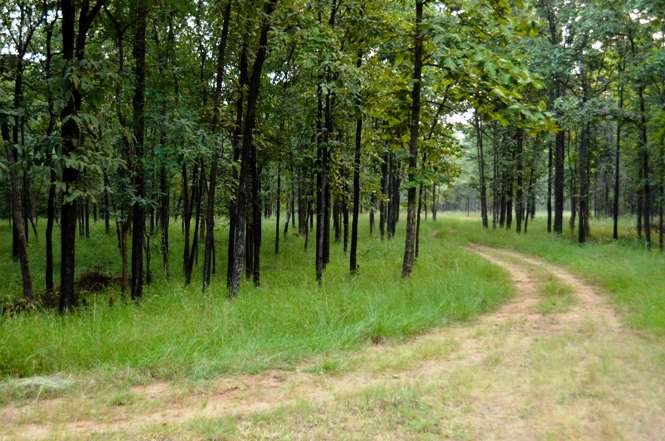
Ways of the forest
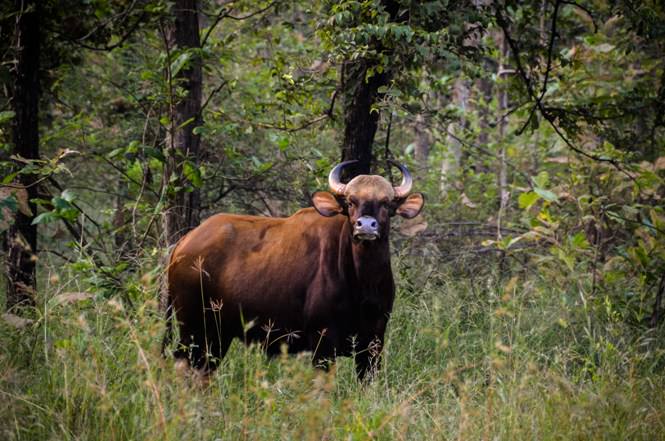
A Gaur looked on at us and refused to budge for a couple of minutes, giving us enough time to capture it in our camera
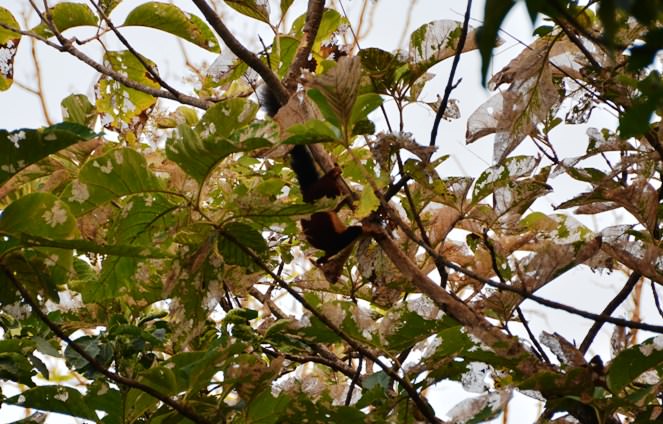
Malabar Giant Squirrel
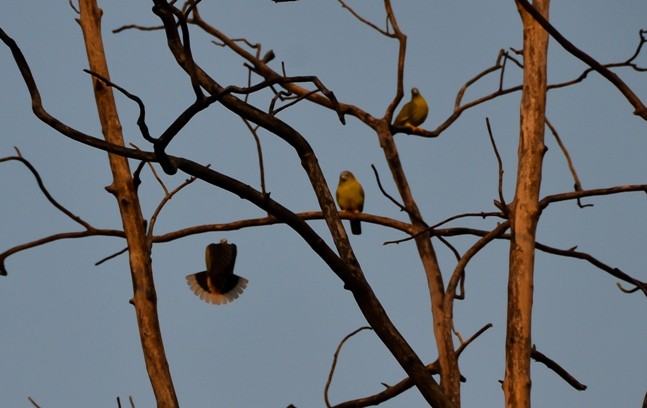
Yellow Footed Pigeon? I guess so…
As we entered the denser forests animal sightings became fewer, even though there were enough birds to give us company. There were plenty of sightings of Yellow-footed pigeon (the state bird of Maharashtra), Pigmy Woodpecker, Black Drongo and others. We came across some majestic Gaurs who can give a tough fight to tigers if the need arises. Gaurs are often mistakenly called Bison, however, Bisons are found in America and stylish sounding or not, these Desi beasts must be referred as Gaurs. A Malabar Giant Squirrel also came in a guest appearance.
झाड ऊँचे और नीचे,
चुप खड़े हैं आँख मीचे,
घास चुप है, कास चुप है
मूक शाल, पलाश चुप है।
बन सके तो धँसो इनमें,
धँस न पाती हवा जिनमें,
सतपुड़ा के घने जंगल
ऊँघते अनमने जंगल।
The primary trees found in these forests are Teak and Saaj. Teaks with their typical large leaves used to make the forest so dense that a few decades back, sunlight would struggle in reaching the ground. Even today, they make impressive canopies in the forest and are its most visible face. Saaj is also known as the Crocodile Tree, for its bark resembles the skin of the crocodile. Another interesting species which we came across is the Ghost Tree – called so because of the unique twisted shapes that it takes and for the fact that it changes colours thrice a year, from pure white during the fall to pink in some other season. These trees have weak roots and tend to hold on to rocks for support.
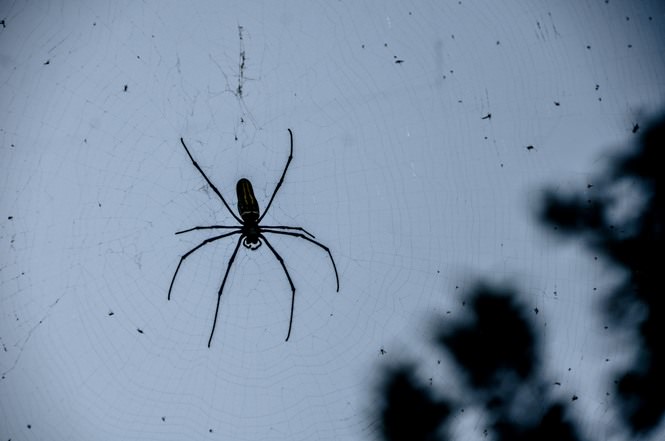
A female Giant Wood Spider and its web
One interesting aspect of this forest are the webs of Giant Wood Spiders. These spiders make webs across the road and keep proper note of the direction of the winds so that moths and insects are swept in by the wind directly in their traps. The female of their species are bigger than the males, and they often eat up the male spiders after mating for a quick source of protein.
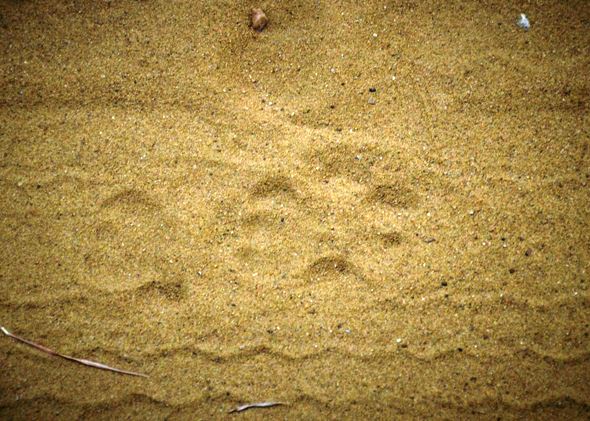
Again it was just pug marks that we could see…
While going towards the Lagda post, we could see the pug-marks of the leopard going both on the way we were going and in the opposite direction as well. These marks were very fresh and were made just a few hours back. It seemed Mr. Spotted was on a morning walk before we turned up. Tigers were nowhere to be seen. Though we were a little disappointed, the beauty and serenity of the Jungle more than made up for that. However, this safari has triggered a yearning to see the tiger in its own forest, and be it Ranthambhor, Dadoba, Kanha or Bandhavgarh – we shall see it.
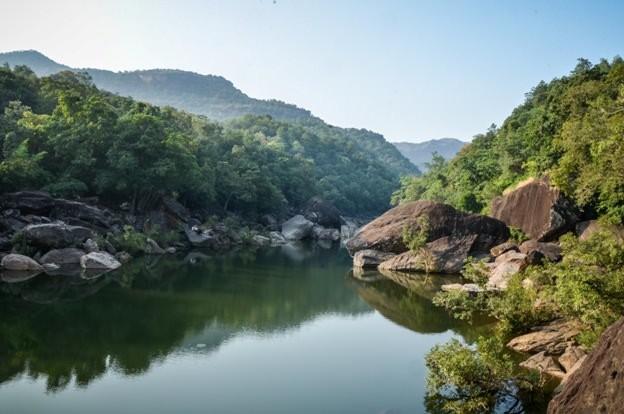
Centre Point
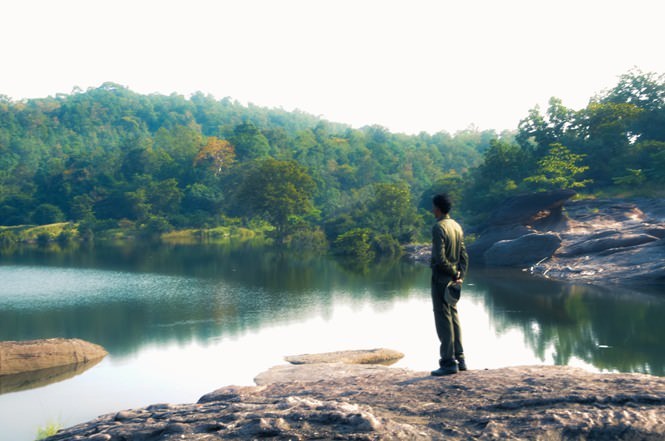
A guide looks on…
The last stop of the Lagda track is known as the Centre point – a beautiful rocky outcrop with the waters of Denwa flowing beneath it and the cliffs of Satpura facing it at a distance. It is at this point that the safari vehicles usually stop, breakfast is laid for the visitors and people relax for sometime, before starting the journey back.
See more photographs from Satpura National Park on Flickr
This Trip to Satpura National Park was facilitated by Pugdundee Safaris. Thanks a lot for such an amazing experience!


Gosh, those big cats are so elusive, right? 🙁
I know– you have to be really lucky to see them.
We are going to Ranthambhor very soon. Hopeful to find them there 🙂
I have a doubt… the pug marks are always found right next to jeep track, so that tourists won’t have to get down from the jeep to see it and staff can spot it from far away and stop right next to it… I feel they are often planted
Hi Srinidhi,
The reason why pug marks are found along the jeep track is because, during the mornings, there is dew on the grass and big cats do not like walking in the dew. So they prefer the road instead. However as the sun rises and the dew evaporates, they go inside the jungle.
One more simple reason is, it is easier to find pug marks on a dirt track. You will not be able to find in the bushes 🙂
Thanks
Puru
Ah! the inviting trails of the jungle… I dint know wild boars were so particular on hygiene and cleanliness. There is always so much we can learn from the ways of the animals. Wonderful travelogue and the poetry was absolutely – amazing!
Wild Boars are much more particular about hygiene than I am (or so says Ekta) 😛 .. Thanks Arti 🙂